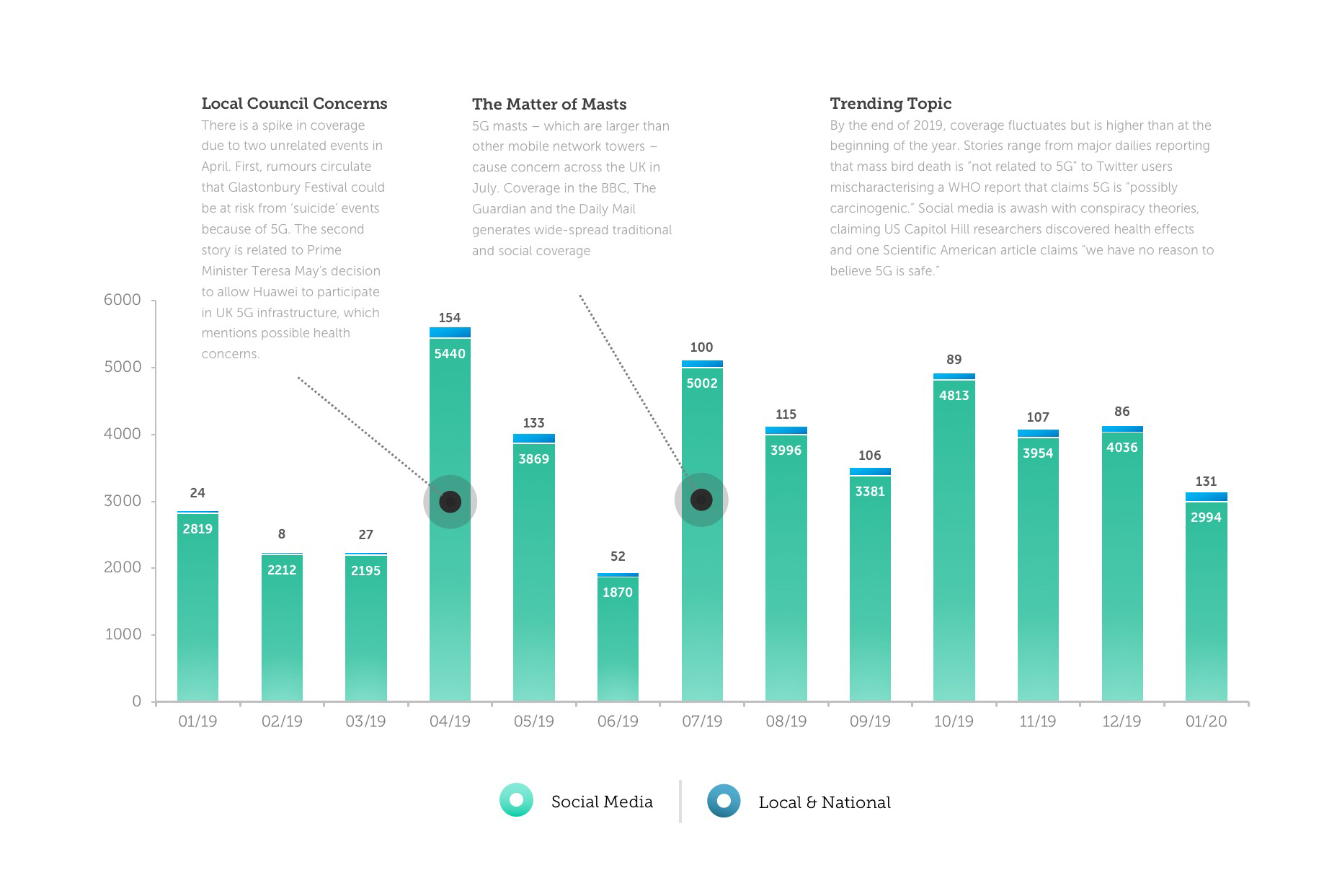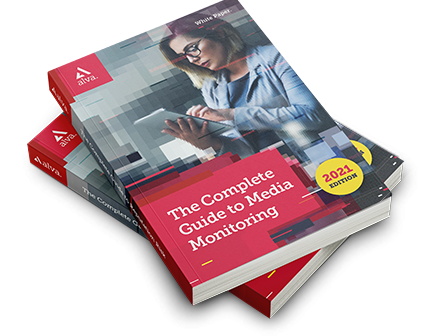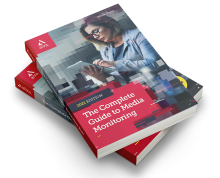5G Health Risks and the Media Infodemic
With the groundswell of negative 5G media sentiment and concerns over 5G health risks appearing here to stay, what can the telecoms industry and communications professionals do about it?
The rollout of 5G – ultra-fast mobile connectivity technology – has suffered repeated negative media coverage spurred by fears that electromagnetic radiation could cause illnesses from cancer to infertility and harm to wildlife. The deep-rooted fears these claims are spreading could threaten the UK’s ability to adopt the new technology.
Despite the talk about the massive leap forward that 5G represents, at the end of the day it is essentially an upgrade to the 4G technology most of us utilise for cellphone communications. The faster download speeds come through a slightly higher level of radiofrequency radiation. And this is the bit that is getting some people worried.
Phrases such as ‘ionizing radiation’ and ‘radio-frequency energy’ have stirred fear into sections of the public about the possible effects of 5G on human health. Protests have taken place across the UK, with some parents calling on schools to ban 5G and councils placing moratoria on the technology.
The 5G health scare is not so much epidemic as it is infodemic. The spread of 5G technology – from London to Lincolnshire – is being matched and even outpaced by the spread of vociferous campaigns about the adverse health effects of 5G on social media, in local newspapers and in local councils across the country.
What story does the data tell?
alva identified all 5G health-related stories published in local and national media in the UK between 1 January 2019 – 14 February 2020 – 1,196 articles came from 330 sources. Social media is shown separately and accounts for roughly 50,000 posts across multiple platforms.

The data shows that national and local media continue to run articles on an almost-daily basis regarding the potential negative health effects of 5G technology. Coverage increased during the period, with local media routinely posting anti-5G stories and major nationals typically writing on the tangible benefits the technology offers and countering the negativity appearing in local media. Social media, on the otherhand, saw dozens of posts every day over the last year.
Sensational stories are quickly picked up and repeated, leading to numerous republications. This cascading effect is frequently observed for sensational headlines, such as “Calls for 5G ban in Glastonbury Festival”.
The volume of articles is not dissipating – and 5G’s impact on health currently appears to be a fixation of local media. Publications on the topic increased in local media starting in August. Year on year, coverage in January has jumped from less than 24 articles per-month in January 2019 to 131 in January 2020.
The 5G infodemic is confusing the average person’s understanding of the technology. While the rollout of 5G networks is inevitable, in some instances it starts to feel dangerous.
Who are the amplifiers of the 5G health scare?
Even though regulator Ofcom has recently declared that there are ‘no identifiable risks’ with 5G (the highest result they found for the 5G band was 0.039% of the recommended exposure limit), the fervency of anti-5G sentiment has continued to fester on internet forums, at the local PTA, and in many local council meetings.
This social movement is made up of more than the just tin-foil hat brigade. It is the mum pushing her child’s school to abandon WiFi and 5G because of an article her friend shared. It is the very vocal, peer-reviewed scientist spouting claims about an immediate end to human fertility caused by 5G’s higher frequency radio waves. It is the recurring references to an increase of tumors in male rats exposed to high-frequency cellphone radiation
While social media has promoted health scares, the local newspaper is writing them up and making them real. In a highly competitive ad-sales environment, local papers are publishing eye-catching headlines to keep their readers.
Local councils are also giving credence to these stories. Placed on a defensive footing – with parents calling for schools to put a moratorium on 5G or environment campaigners claiming that a mass bird die-off is due to 5G or that Wuhan’s coronavirus was caused by 5G testing – councils are under immense pressure to balance protecting human and environmental health with the need to help their economies expand.
Tackle misinformation while expounding the benefits
Communications professionals have a challenge with the 5G health scare. This issue concerns a battle (still not won) to explain the benefits that 5G will bring while credibly debunking claims that the technology will not harm human health or kill wildlife. And information needs to find the audiences promoting the scares on their own turf.
It’s only natural for a mother or father to question a school’s choice to adopt 5G if there’s even a small chance for adverse health effects. Health concerns can be overcome through concerted information campaigns and industry led campaigns backed by health and science professionals not linked to telecoms companies.
Others might want to take a look at what Huawei has achieved in this regard. The company has run a successful and robust ad campaign aimed at connecting customers to the “tangible benefits of 5G.” This re-created the dynamic enthusiasm people have for technological advances then explored the possibilities and positive impact 5G will have on daily life – from the decreased risk of AI-powered surgery to the rapid data download speed of 100Mbps.
Key takeaways
- The 5G health scare is an infodemic. There is too much conflicting information – especially on social media – that can lead members of the public to become concerned about the potential health ramifications of the technology. Counter-information is out-pacing government, reliable media and industry rebuttals.
- Local media outlets are publishing confusing and sensational headlines in an effort to compete for all-important web traffic and ad sales. alva finds a spike in coverage associated with sensational local media stories, especially concerning the erection of 5G masts and protests at local council meetings.
- Communications strategists need to up their game to help stem the tide of counter-information associated with 5G to help the public understand that 5G will enhance overall quality of life and create space for un-realised and unprecedented advances across industries.
Be part of the
Stakeholder Intelligence community











